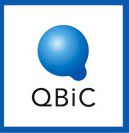TOP >
セミナー&イベント >
セミナー >
QBiC Seminar: Pieter Rein ten Wolde

|

|
|
Speaker
|
Pieter Rein ten Wolde, Ph.D.
Biochemical Networks group, FOM Institute AMOLF
|
|
Date & Location
|
Wednesday, July 30, 2014
14:45 - 15:30
OLABB 1F Lounge
(6-2-3, Furuedai, Suita, Osaka 565-0874)
*There will be a video broadcast in CDB Bldg.D, E-206
|
Title |
Fundamental Limits to Cellular Sensing |
Abstract |
Cells can measure chemical concentrations with extraordinary precision. This raises the question what is the fundamental limit to the accuracy of chemical concentration measurements. Cells measure chemical concentrations via receptors on their surface. These measurements are inevitably corrupted by the noise that arises from the stochastic arrival of the ligand molecules by diffusion and the stochastic binding of the ligand to the receptor. Cells can reduce the sensing error by increasing the number of measurements, either by increasing the number of receptors or by increasing the number of measurements per receptor and averaging these measurements over time. This time averaging has to be performed by the signaling network downstream of the receptors. However, this network is also stochastic in nature, which means that they will also add noise to the receptor signal. In this talk, I will show that the sensing accuracy of passive signaling systems is limited by the number of receptors; a downstream processing network can never increase the precision. This limit arises from a fundamental trade-off between the noise in the receptor state and the intrinsic noise of the signaling system. Non-equilibrium systems can lift this trade-off. However, this requires receptors and their integration time, downstream molecules, and energy. Each resource imposes a fundamental sensing limit, which means that the sensing precision is bounded by the limiting resource and cannot be enhanced by increasing another resource—these resources cannot compensate each other. This result yields a new design principle, namely that of optimal resource allocation in cellular sensing. It states that in an optimally designed sensing system, each resource is equally limiting, so that no resource is wasted. We find that the chemotaxis network of E. coli obeys the principle of optimal resource allocation, indicating a selective pressure for the efficient design of cellular sensing systems.
|
Host |
Koichi Takahashi
Laboratory for Biochemical Simulation

Tel: 06-6155-0472
|

|
|